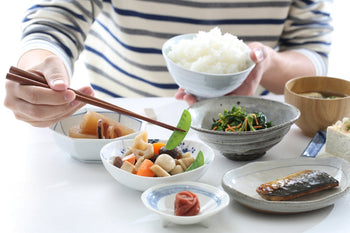

An Invitation to Japanese Creative Cuisine
Exploring Unique Japanese Ingredients
One of the secrets behind the magic of Japanese creative cuisine lies in its ingredients. While many people are familiar with staples like sushi and ramen, there are countless lesser-known ingredients that add depth and complexity to Japanese dishes. For instance, yuzu—a citrus fruit native to East Asia—lends a unique tangy aroma to various dishes, making it a favorite among chefs. Meanwhile, shiso leaves, with their minty flavor, are used to add freshness and an unexpected twist to traditional recipes.
These ingredients play a crucial role in creative cooking, allowing chefs to experiment and push boundaries. They are often sourced locally, ensuring freshness and authenticity. The use of umami-rich elements like miso, soy sauce, and bonito flakes helps elevate the natural flavors of other ingredients, creating a harmonious balance that is characteristic of Japanese cuisine.
The availability of these unique ingredients has paved the way for endless culinary possibilities. Chefs across Japan are constantly innovating, blending traditional flavors with new and exciting ones. This adventurous spirit is what makes Japanese creative cuisine so exciting, as each dish tells a story through its ingredients.
Culinary Techniques in Japanese Creative Cuisine
Cooking techniques are the backbone of Japanese creative cuisine, where tradition meets innovation. Traditional methods such as grilling, steaming, and fermenting are still widely used and valued. However, modern approaches like sous-vide and molecular gastronomy are also being embraced by Japanese chefs, adding a layer of sophistication to their creations.
Presentation is paramount in Japanese cuisine, often regarded as an art form in itself. Dishes are meticulously arranged, with colors and textures balanced to please the eye as well as the palate. This emphasis on presentation is deeply rooted in Japanese culture, reflecting the belief that visual appeal enhances the dining experience.
Chefs often incorporate intricate knife skills, known as "katsuramuki," to create paper-thin slices of vegetables, adding both elegance and flavor. These techniques highlight the chef's skill, dedication, and respect for the ingredients, showcasing their ability to transform simple components into masterpieces.
Regional Variations in Creative Japanese Dishes
Japan's diverse regions each boast unique culinary traditions, which are beautifully reflected in their creative dishes. In Hokkaido, the northernmost island, seafood reigns supreme. Creative dishes like "Kani Zushi" (crab sushi) showcase the region's fresh crab, while innovative desserts incorporate Hokkaido milk and cream.
In the Kansai region, Osaka is known for its street food culture. "Takoyaki," or octopus balls, have been reimagined by chefs who experiment with fillings and toppings, offering a fresh take on this beloved treat. Kyoto, on the other hand, is famed for its delicate kaiseki cuisine, where seasonal ingredients are transformed into elegant, multi-course meals.
Local ingredients and traditions heavily influence these creative dishes. Chefs draw inspiration from their surroundings, incorporating regional produce and flavors to create dishes that reflect their environment. This commitment to locality not only ensures quality but also preserves the rich culinary heritage of each region.
The Art of Plating and Presentation
In Japanese cuisine, the presentation is just as important as taste. Aesthetics play a vital role in enhancing the dining experience, inviting diners to appreciate the visual beauty before savoring the flavors. This philosophy is evident in the meticulous attention to detail that goes into plating.
For home cooks looking to elevate their presentation, consider using a variety of colors and textures. Fresh herbs, edible flowers, and colorful vegetables can add vibrancy to your dishes. Balance is key—arrange ingredients thoughtfully to create harmony on the plate.
Another tip is to use contrasting shapes and sizes to add visual interest. Consider the placement of each element and strive for symmetry or asymmetry, depending on the desired effect. By incorporating these principles, you can create stunning presentations that capture the essence of Japanese cuisine.
Profiles of Creative Japanese Chefs
Japanese chefs are known for their dedication to the craft and their innovative approaches to cuisine. For example, Chef Yoshihiro Narisawa is celebrated for his "innovative Satoyama cuisine," which emphasizes sustainability and highlights the natural beauty of Japan's landscapes. His dishes often feature foraged ingredients and are presented as edible art.
Chef Nobu Matsuhisa, founder of the globally renowned Nobu restaurants, is another pioneer in creative Japanese cuisine. He blends traditional Japanese techniques with Peruvian influences, resulting in dishes that are both unique and widely acclaimed. His approach to fusion cuisine has inspired countless chefs worldwide.
These chefs' insights and dedication to innovation serve as an inspiration for aspiring cooks and food enthusiasts alike. Their work demonstrates that creativity knows no bounds and that the future of Japanese cuisine holds exciting possibilities.
Where to Experience Japanese Creative Cuisine
For those fortunate enough to visit Japan, there are countless opportunities to indulge in creative Japanese cuisine. Tokyo, with its Michelin-starred restaurants and bustling food markets, is a culinary haven. Dine at Narisawa or Sushi Saito for an unforgettable gastronomic experience.
Food festivals like the Sapporo Snow Festival and Kyoto's Aoi Matsuri offer unique glimpses into Japan's culinary diversity. These events showcase regional specialties and creative dishes, providing an immersive experience for food enthusiasts.
Travelers seeking unique culinary experiences should explore local izakayas, where traditional dishes are given a creative twist. Engaging with locals and exploring hidden gems will undoubtedly lead to memorable dining moments.
Exploring the World of Japanese Creative Cuisine
In conclusion, Japanese creative cuisine is a testament to the country's rich culinary heritage and innovative spirit. Its ability to blend tradition with modernity has captivated food lovers worldwide. By exploring unique ingredients, mastering culinary techniques, and appreciating the artistry in plating, you can deepen your understanding of this fascinating cuisine.
Whether you're an adventurer at heart, a connoisseur of culture, or simply someone who loves a good meal, Japanese creative cuisine offers something for everyone. We encourage you to explore and appreciate the dishes that define this vibrant culinary landscape. Embark on this flavorful journey and discover the endless possibilities that await in the world of Japanese creative cuisine. If you're eager to learn more and refine your culinary skills, there are plenty of online resources and cooking classes available to guide you further.



